SHOES
Shoes have a huge impact on your alignment and the health of your feet and a knock on effect to your whole body.
Most shoes are designed to make your feet look a certain way and not to accommodate a proper foot shape. And if you look at the shape of your shoes you normally wear and the shape of your feet then look at a baby or toddlers feet (pics below if you don’t have a baby or toddler to hand) you can see how a foot should naturally look.
My feet, you can see especially with the left how my feet are more shoe shaped than foot shaped and hence the bunion forming as my toes were squished together.
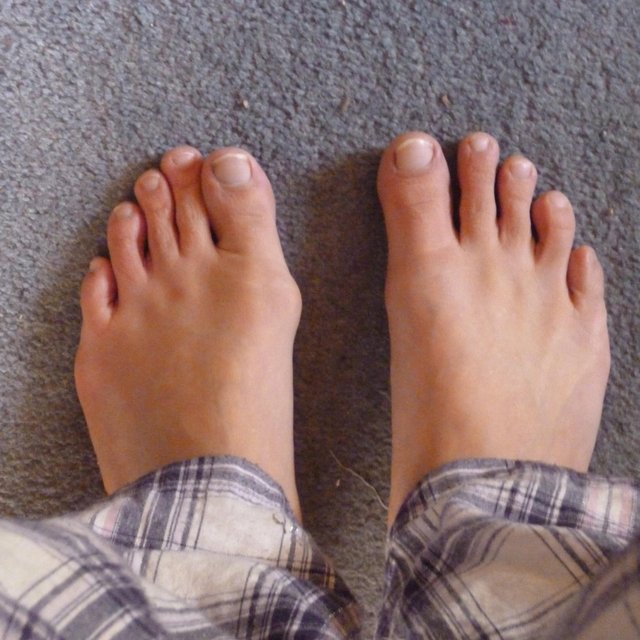
Taken sneakily while toddler was asleep as he refused to pose earlier.
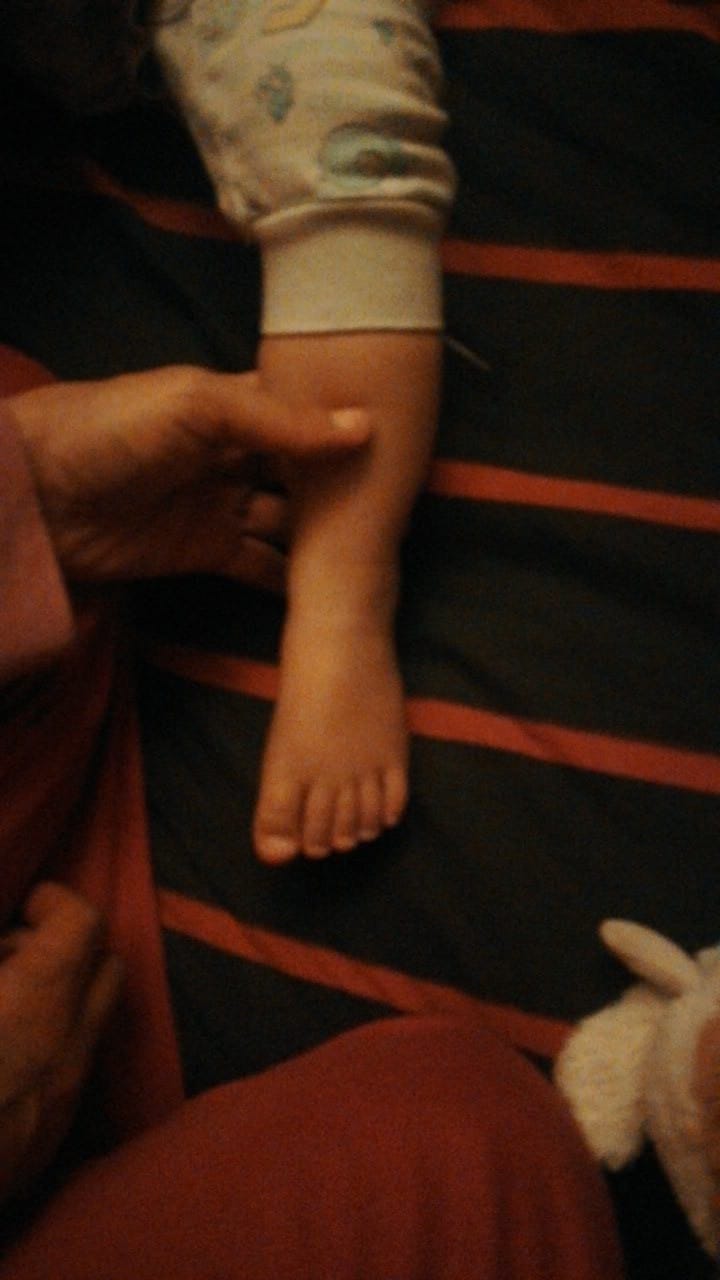
Majority of shoes are made with a narrow toe box which squishes your toes and the delicate bones of your feet together, causing among other things bunions and hammer toes. Which not only affects how you can use your feet but can also be incredibly painful. If you find that you stand with your pelvis more forward then you are not only squishing your toes but also then adding extra weight to the many bones and muscles of your foot.
Shoes also have pretty solid soles, there is a misconception, particularly children’s and older persons shoes that the foot needs to be protected from the ground. But this actually prevents your feet from doing what they are naturally designed to do.
Each of your feet has 26 bones, 33 joints and over 100 muscles, tendons and ligaments. The foot has a feedback system to the brain it tells the brain whether the ground is rough, smooth, uphill, downhill etc to help with balance and locomotion. So imagine when you put solid based shoes on that restrict ankle movement how the way you walk is impacted. (and you can see this quite remarkably with a toddler, that they go from getting along well to walking with lifted high steps and being quite unsteady and having to work hard to move. )
As we spend so much of our lives in shoes the muscles become atrophied and walking on pebbly surfaces for example becomes unbearably painful.
Heels! Nearly ever single type of shoe has a heel, even if it only looks like a tiny heel and especially if that heel is on a toddler or child’s shoe it can have huge negative impacts on your alignment. Your body is pitched forward and to make up for that you have to lean back creating pressure on the soles of the feet (plantar fasciitis), back and pelvic floor. This combined with weak hips will allow the internal rotation of the femurs which will cause collapsing of the arches of your foot. So in this respect arch supports will not create more arch it is strengthening and realigning your femurs which will correct fallen arches.
Shoes that are not attached to your feet (so flip flops and clog type ones encourage yoru toes to grip causing more stress and tension to your feet.
There are now lots of different types of barefoot friendly shoes both fro children and adults and don’t have to be expensive if you follow the simple guidelines.
- roomy toe box to allow your toes to spread
- Flexible soles (basically will your shoes bend where your foot does?)
- no heels
- flexible around the ankle
- attach to the foot
If you are transitioning though, to barefoot shoes it is really important you do so slowly. If you are used to very high heels then reducing them by an inch at a time is much more benefical than dropping down to zero heels which could cause you all sorts of problems. Same with the soles if you are used to really thick soles going down to very thin ones will hurt!
Flexible soles, how flexible are the soles of your shoes?
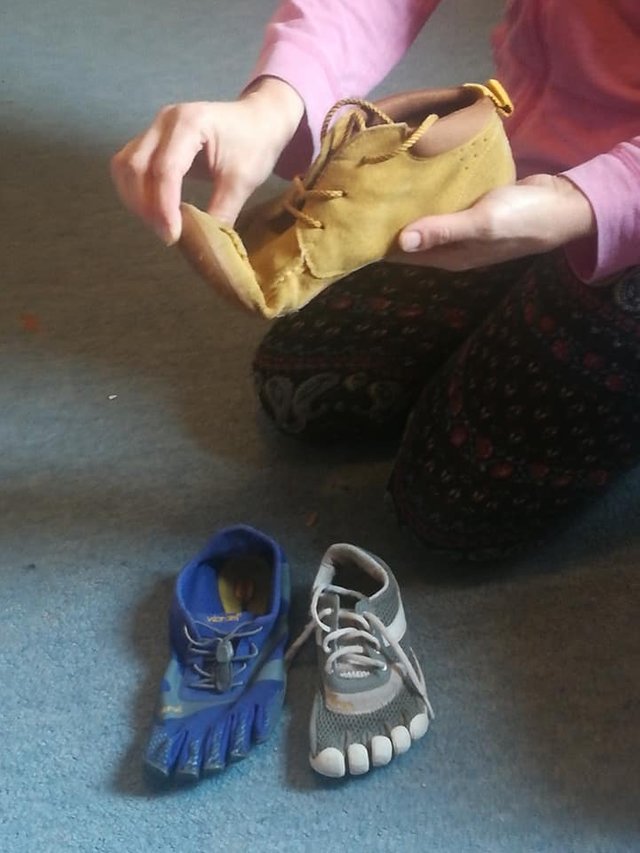
Good exercises to do as you progress to barefoot friendly shoes.
Calf stretches, back of the foot stretch and massage of the foot with a ball.
Top of the foot stretch.
Helps release tension between the shin and the foot.
Stand up and reach one leg behind you tucking your toes under.
Make sure you keep your upper body in alignment.
If your foot cramps you will need to do it more often but for shorter periods of time. You could alos try it whilst sitting instead of standing to reduce the load.
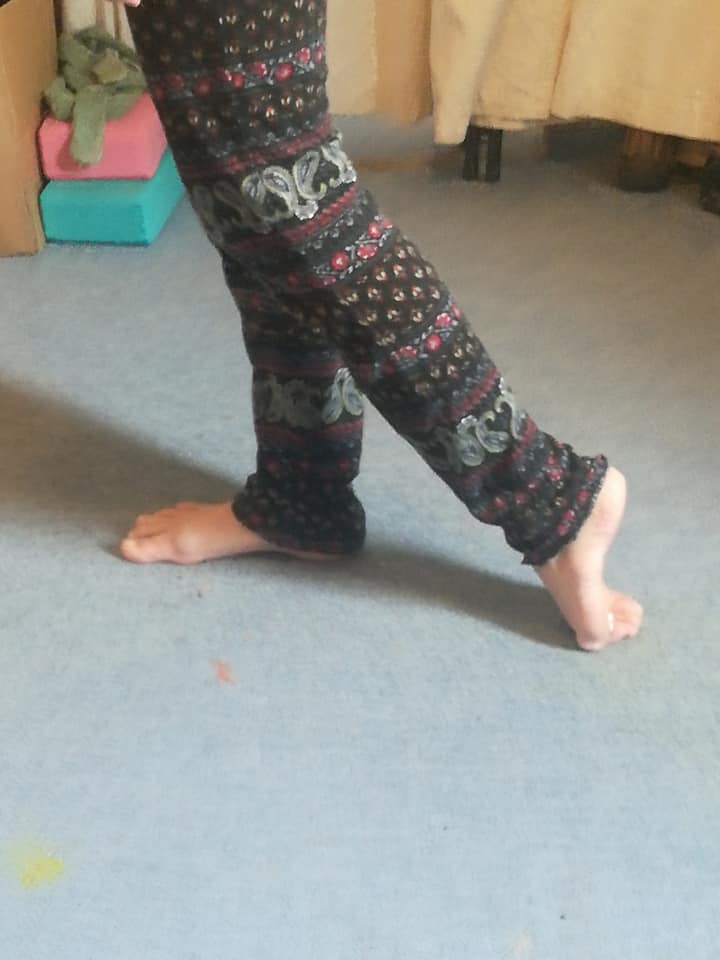
Massage of your sole with a ball
This exercise helps to mobilise the muscles in your feet (quick quiz - how many are there?)
Allow your foot to o drape over a ball (tennis ball in this case) and then start to roll the ball a bit forward, back and from side to side. Keep your heel on the ground and keep your other foot up next to the draped one. Try and roll all of your foot.
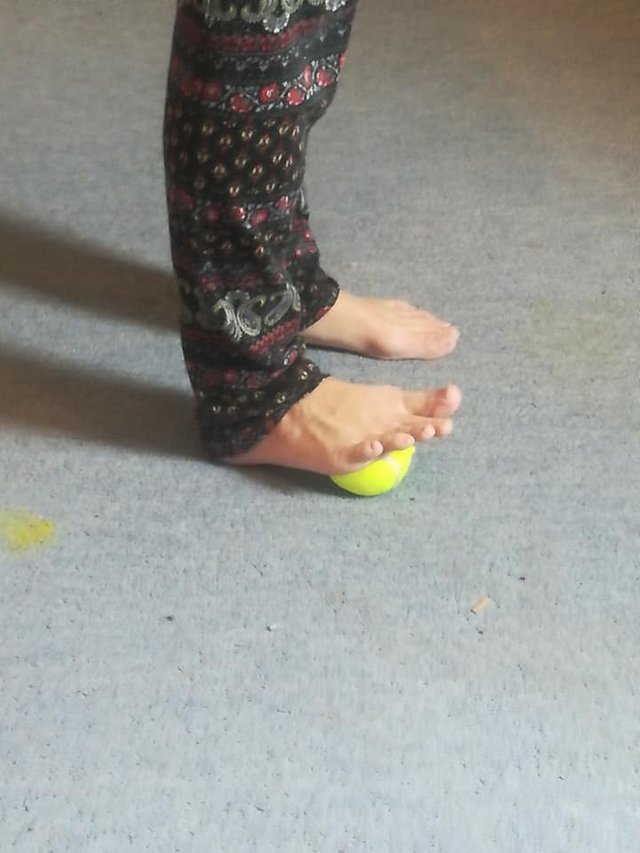
Another great article Rosie, following